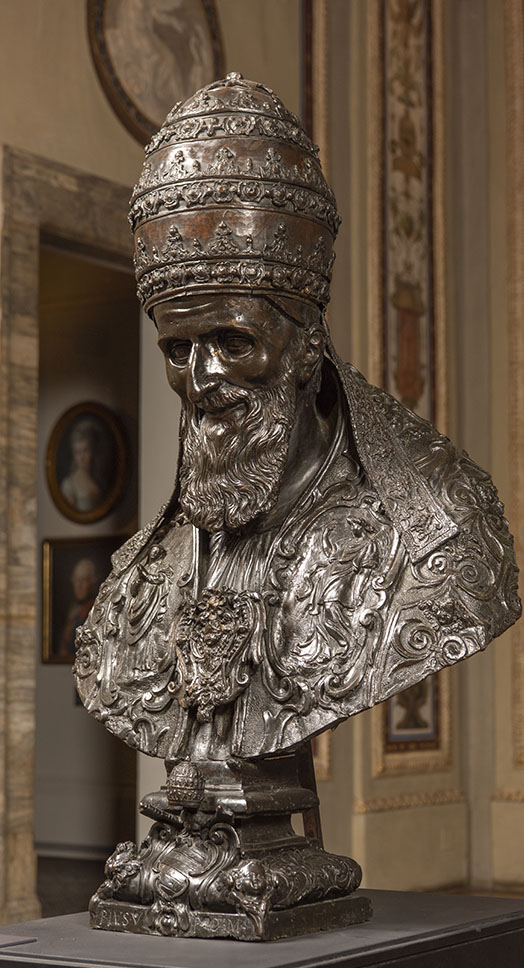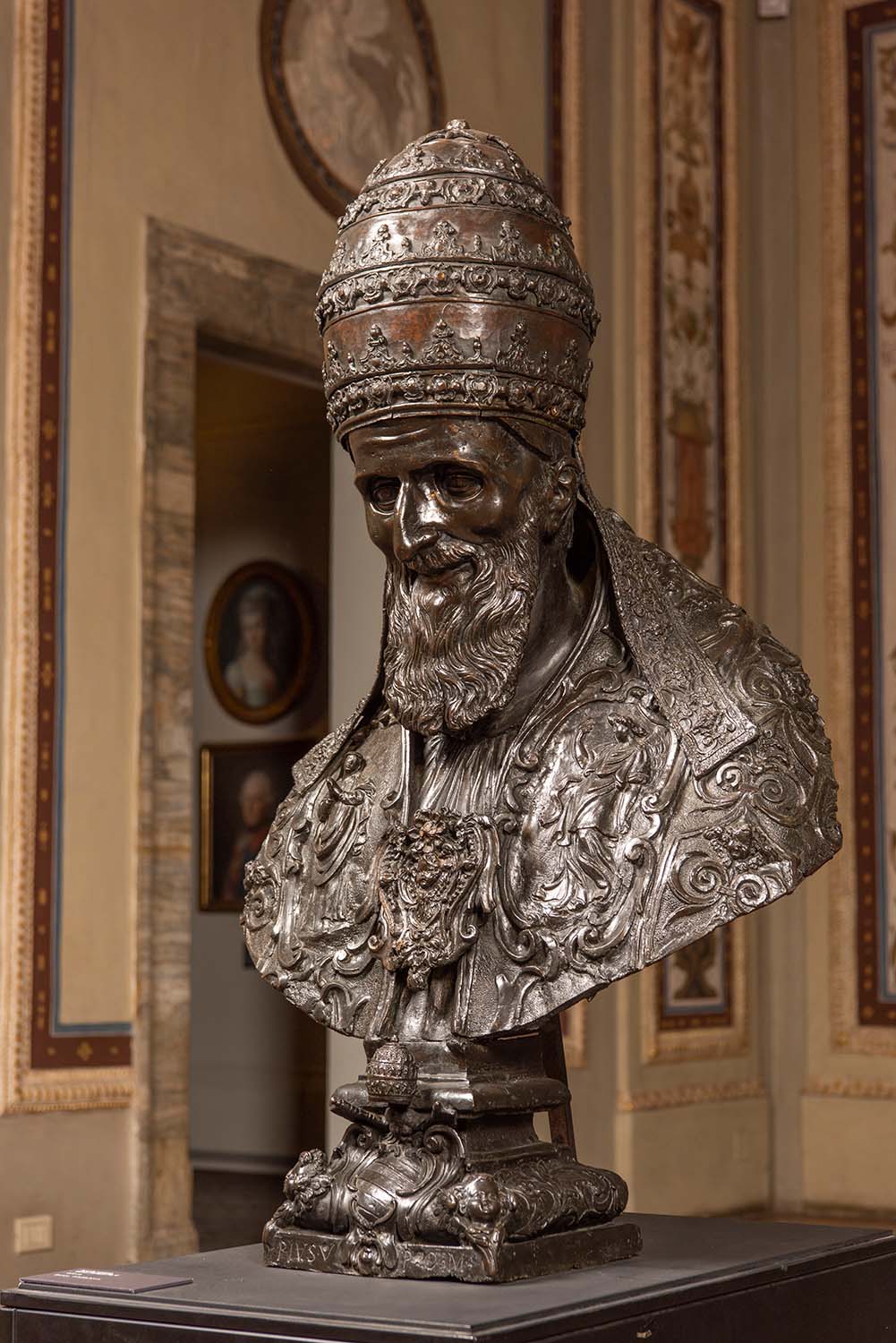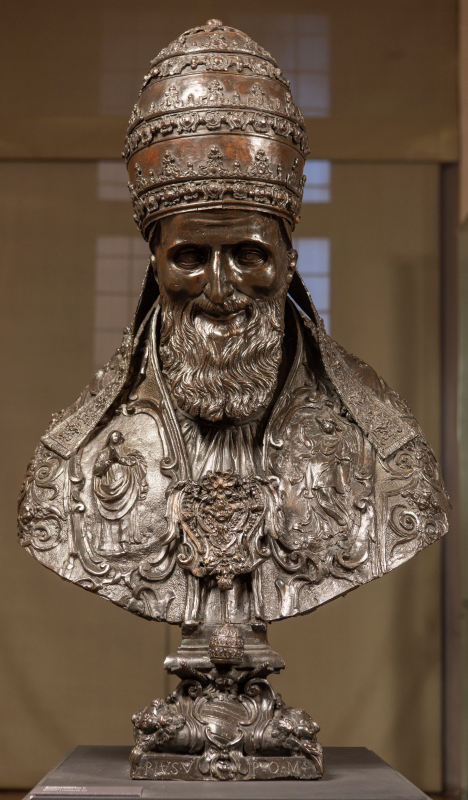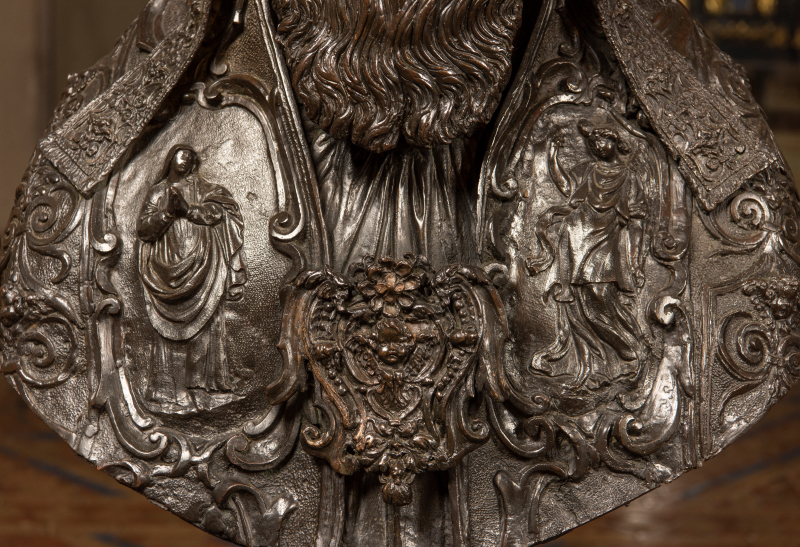The last work of art to come to the museum is an important bronze portrait of a 16th-century pope

The bust, exhibited in the Altoviti Room still has no certain attribution. Some scholars believe it is by the workshop of Taddeo Landini (c. 1550-1596) or that of Bastiano Torrigiani (c. 1542-1620), placing it in the late 1580s. More recently, Andrea Bacchi has traced it to an anonymous Roman master, who would have completed it around 1570.

This high-quality portrait is of Pope Pius V, born Antonio Ghislieri (1504-1572). Having entered the Dominican Order at a young age, Ghislieri climbed through the ranks of the Catholic church until he became a cardinal in 1557. Elected pope in 1566 with the support of Charles Borromeo, in the six years of his papacy Pius V was known as one of the most rigorous interpreters of the Counter-Reformation, i.e. the process of reaction and reorganisation promoted by the Catholic Church in Rome in reaction to the rapid spread of the Protestant Reformation. He is associated with the creation of the Holy League and the Battle of Lepanto, the naval engagement in which, on 7 October 1571, a coalition of Catholic states defeated an Ottoman fleet. In the early 18th century, Clement XI declared his sainthood.

Pius V is portrayed with the papal tiara and wears a sumptuous mantle called a cope, decorated with images of the Angel of the Annunciation and the Virgin Mary, closed by a clasp with a cherub at its centre. The bust rests on an ornate pedestal with the Ghislieri coat of arms between two cherubs and, lower down, the name of the pope: ‘PIVS V. P.O.M.’.

Once in the collection of the Duke of Flanders, the sculpture became part of that of Leopold I of Belgium, the first King of the Belgians as of 1831. It was acquired by the Italian government in 2020 and immediately transferred to Palazzo Venezia.